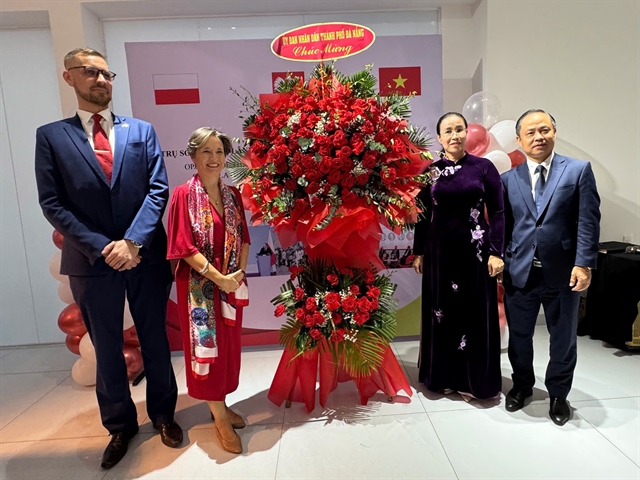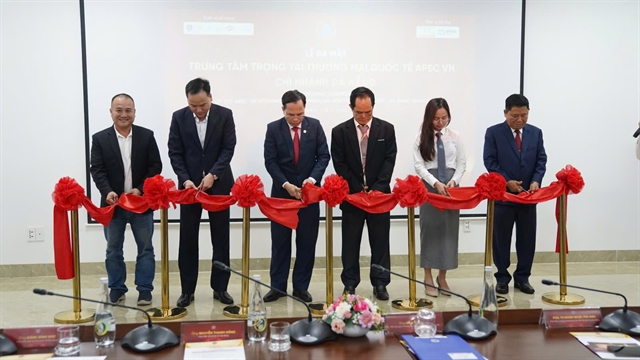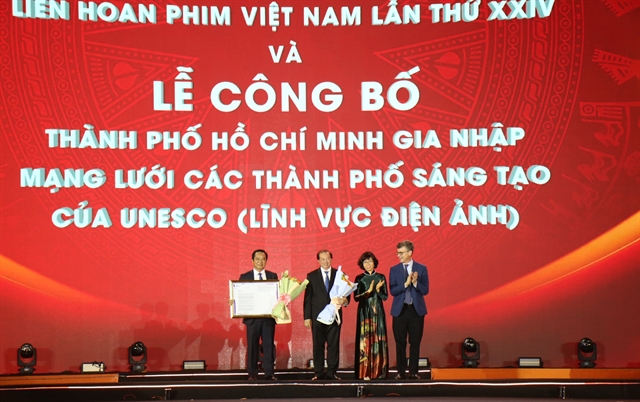 Life & Style
Life & Style
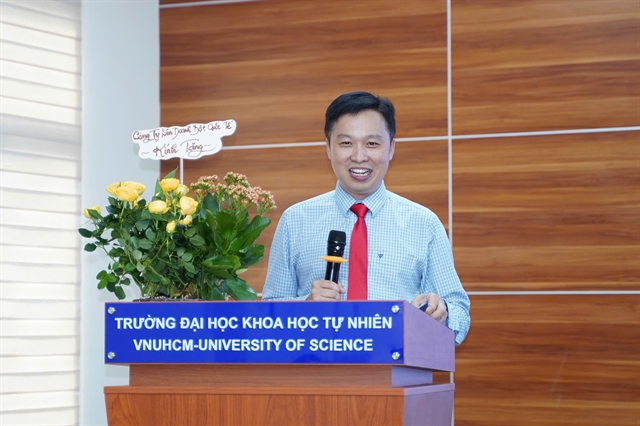
Trần Hoàng Nam
HUẾ — The central city of Huế is famed for its ancient palaces, mausoleums, pagodas and temples, and one of the most impressive destinations in the former imperial capital is Huyền Không Sơn Thượng Pagoda.
The pagoda is located in Đồng Chầm Village, Hương Hồ Commune, Hương Trà District of Thừa Thiên Huế Province, some 10km west of Huế City’s centre.
The path to the pagoda goes up a hill amidst the cool fresh air and green trees; it's a place where the normal hustle and bustle of life seems far away.
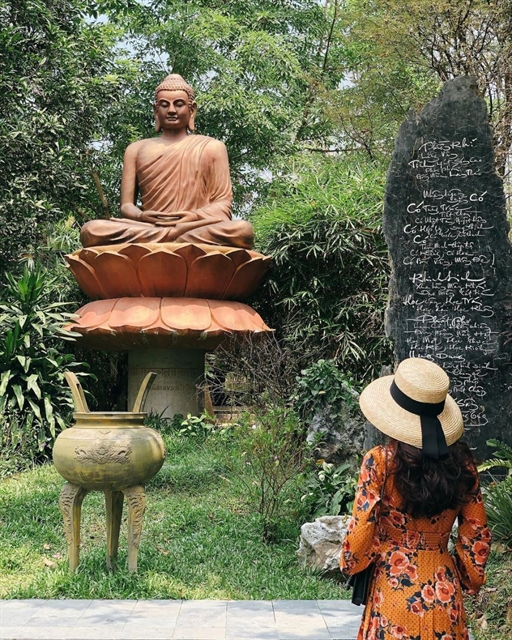
|
| Visitors can find a tranquil place to escape from hustle and bustle. — Photo cattour.vn |
Huyền Không Sơn Thượng Pagoda is of the Nam Tông (Khmer Theravada) Buddhism school, which was built in 1989 by Venerable Giới Đức and through the contributions of monks and Buddhist followers.
According to locals, the original Huyền Không Pagoda is situated in the village at the foot of the mountain.
Venerable Giới Đức or Minh Đức Triều Tâm Ảnh, who used to manage the original Huyền Không Pagoda at the foot of the mountain, left the old pagoda and went up the mountain to plant 50ha of forest and raised funds to build Huyền Không Sơn Thượng Pagoda there 20 years ago.
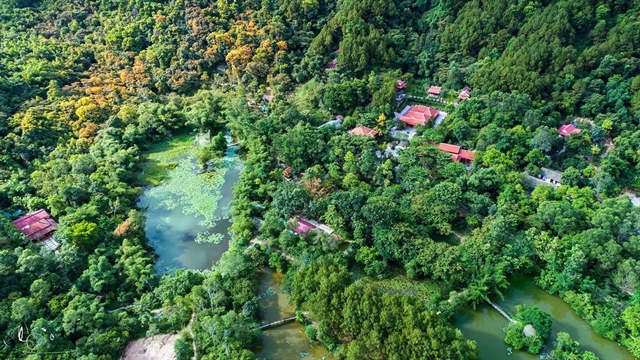
|
| An aerial view of the pagoda. Photo wowweekend.vn |
He is also a famed poet and calligrapher in the locality.
The pagoda is located 300m above the sea level and the total area is more than 10,000sq.m, including praying halls and monks’ rooms.
“I felt as if I were in a legendary scene with tranquil lakes decorated by water lilies flowers and white swans,” said Minh Trang, a visitor from Hà Nội.
A wooden bridge leads to the main yard, where 500 orchid baskets are hung from the big trees.
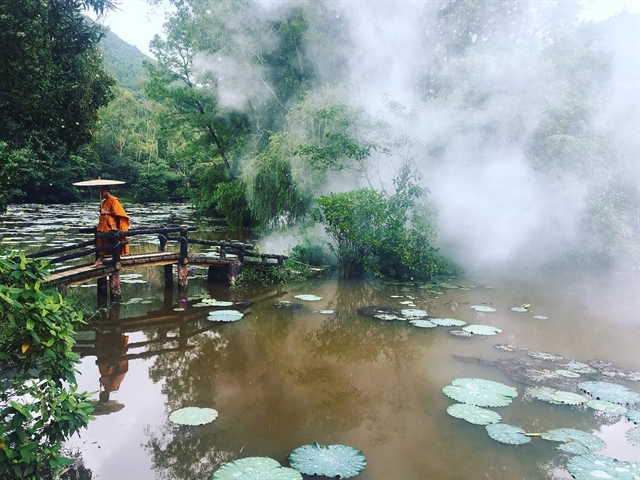
|
| A lotus pond inside the pagoda. — Photo chudu24.com |
“The flowers, trees and simple architecture created by bamboo decoration objects make people think of a classical space of culture, a meeting place for poets rather than a solemn pagoda,” commented Hà Thu Phương, another visitor from Hà Nội.
The main praying hall itself is not in the normal pagoda style with a concrete stable wall, wooden pillars and cement altar platform.
The main praying hall looks more like a small house, with low ceiling and gaps between the roof and wall, letting wind flow through it.
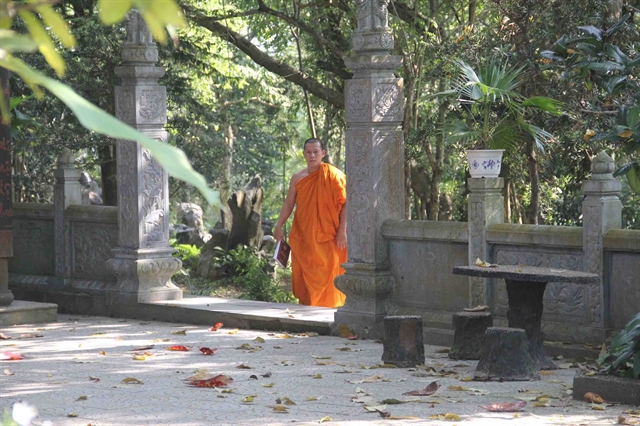
|
| A tranquil surrounding. — Photo phununews.vn |
A monk from Đà Nẵng, who preferred to be unnamed, noted that the simple architecture makes people feel the Buddha statue in the middle of the hall is set in nature, mingling with the universe.
“After praying, I feel familiar with room corners, trees in the yard,” he said.
The area also has a reading room to the left and a living room for monks to the right.
Further behind the main praying hall is a bamboo garden by a lake, where writers and calligraphers often hang out.
Scattered here and there in the garden are calligraphic works carved on wood or stone with Buddha’s teachings and famed verses by noted poets.
There are also some stone sculptures made by late artist Điềm Phùng Thị (1920-2002).
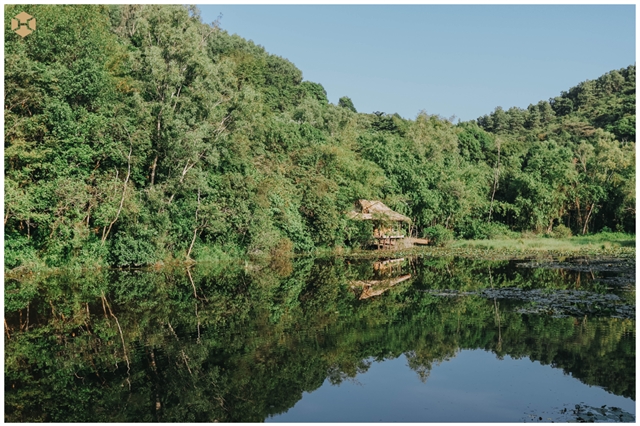
|
| Green scenery can inspire poetry. — Photo huongriver.com |
On an island in the middle of Hàm Nguyệt Trì Lake nearby is a pine forest with big trees, which hosts calligraphy exhibitions during festivals.
A bamboo light holder is attached to each pine tree. At night, oil lamps are put on the holders for light and to create a dreamy scene for the site.
“I spend a morning here whenever I visit Huế,” said visitor Đình Long, from Quảng Nam Province. “I feel easy inside, temporarily forgetting sorrows. The pagoda is not only a beauty spot but also a recreational place for busy travellers.”
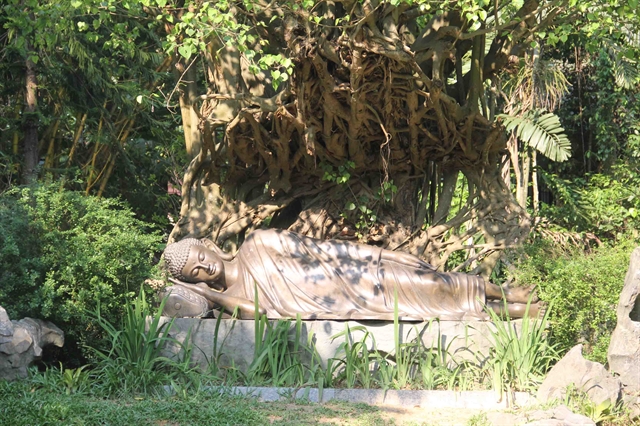
|
| A statue of reclining Buddha at the pagoda. — Photo phununews.vn |
Phùng Minh Nguyệt, a local student, said she and her friends often visit the pagoda at the weekend.
“Sometimes my school organises field trips here for a day to visit other destinations nearby,” she said. “We stop here for lunch in the pine forest. We have a good time here all the time.” — VNS

